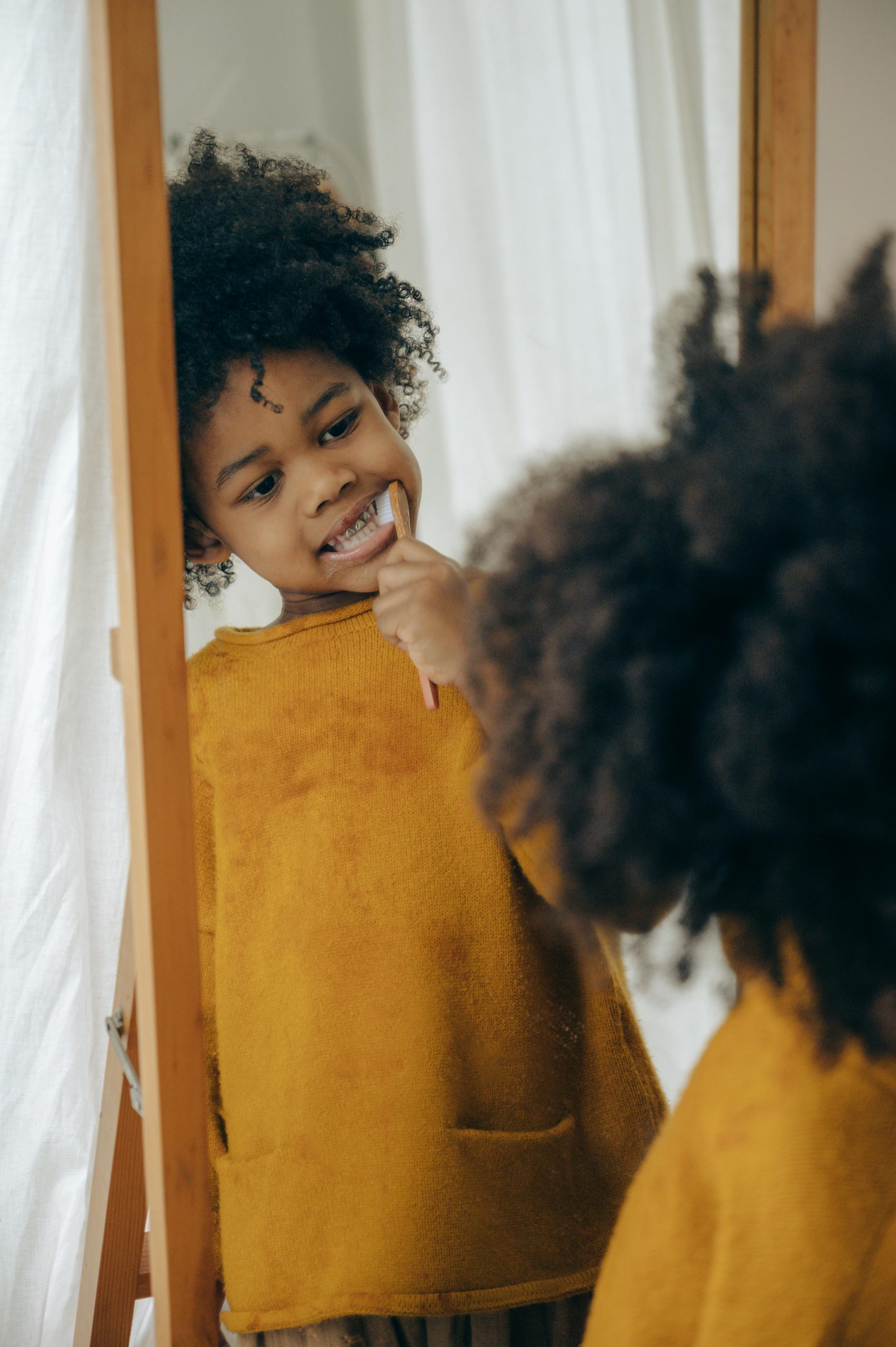An Overview of the Value of Proper Hygiene Practices in Children

The foundation of health, hygiene, is essential for preventing disease and improving general health. It’s a barrier against infections, not just a matter of cleanliness. It is extremely important to instill good hygiene habits, especially in children. It becomes clear that the early years are essential for forming these habits and laying the groundwork for lifelong health and vitality. Early adoption of these habits not only helps stop the spread of illness but also fosters a culture of cleanliness and health that benefits the entire community. Children learn important life lessons during this formative time that will impact both their own and others’ health in the future. It is an ideal time to impart these lessons to them.
Encouraging Children to Develop Good Hygiene Habits


When and How to Wash Your Hands Correctly
- Instruct kids to wash their hands with soap and water before eating, after using the restroom, and after returning from outdoor play.
- Cleaning all areas of the hands thoroughly for at least 20 seconds is essential. This easy action can stop infections from spreading very quickly.
The Value of Brushing and Flossing in Oral Hygiene
- Keeping teeth healthy is essential from a young age. Encourage kids to floss every day and brush their teeth twice a day using fluoride toothpaste.
- This regimen not only prevents tooth decay but also teaches children the value of routine dental care, setting the groundwork for developing healthy habits.
Personal Hygiene: Shampooing, Clipping Nails, and Brushing Hair
- Frequent bathing removes dirt and bacteria, and taking good care of one’s nails and hair inhibits the growth of bacteria while enhancing one’s self-esteem.
- Make sure you communicate the advantages of cleanliness in a way that kids can understand so they will be more inclined to adopt these habits.
Why Maintaining a Clean Environment Is Important
- Maintaining a clean home helps people practice good personal hygiene. Emphasize to kids the importance of cleanliness for their health and to maintain a clean living environment.
- This encourages a healthy lifestyle and instills in them a sense of accountability and respect for their environment.
By incorporating these fundamental hygiene practices into everyday schedules, we equip kids with the knowledge and routines needed for long-term health and wellbeing. It’s a symphony of small deeds, each one vital to safeguarding and improving their well-being, with every note emphasizing the significance of cleanliness.
Encouraging Children to Develop Good Hygiene Habits
Tips for instilling good hygiene habits in kids
- Setting a good example is crucial. Youngsters imitate the behaviors of those around them because they are keen observers. They are more likely to follow in the footsteps of adults who regularly brush their teeth, wash their hands, and keep themselves clean.
- Making hygiene enjoyable changes it from a chore to a fun pastime. Include games, sing songs, and share hygiene-related stories. To make the process more interesting and guarantee that they wash their hands for the recommended length of time, consider making a 20-second handwashing song. This method educates as well as entertains.
- Routine and consistency are the cornerstones of habit formation. Hygiene routines such as washing hands before meals and brushing teeth before bed can be ingrained into daily life by creating a regular schedule. Repetition helps to instill the value of hygiene by progressively making it second nature.
- The provision of positive reinforcement is a vital factor in motivating children to practice proper hygiene. Rewarding good behavior with stickers, praise, or extra playtime can help them remember to brush their teeth and wash their hands. Positively highlighting the advantages of hygiene promotes a greater appreciation and understanding of cleanliness.
We can help kids live healthier lives by incorporating these techniques into everyday activities. It’s about establishing a clean rhythm that permeates every beat of their lives, reinforcing the importance of proper hygiene.
Visit the Australian Government Department of Health website to learn more about the significance of handwashing . The Raising Children Network also provides helpful advice on how to make handwashing enjoyable and productive for kids .
The Supporting Role of Communities and Schools in Hygiene Education

Communities and schools are essential in helping kids learn good hygiene practices at home. They work together to offer a complete support system, which is essential for establishing lifelong hygiene habits.
Programs for school-based hygiene incorporate lessons and exercises meant to instill in kids the value of cleanliness. These programs make learning enjoyable and educational by including interactive lessons on oral hygiene, handwashing, and personal hygiene. Children receive consistent messages about the value of hygiene by having these lessons taught in school, which reinforces what they learn at home.
In addition to school programs, the community offers workshops, events, and public health initiatives. These resources provide more engaging opportunities for parents and kids to learn about hygiene. For instance, community health fairs can offer dental care or handwashing demonstrations, making the information available to everyone.
A potent synergy is produced when communities, schools, and parents work together. Parental involvement in school and community hygiene campaigns serves to emphasize the significance of these practices. Through this collaboration, children will be given a consistent message about hygiene both inside and outside of the classroom, increasing the likelihood that they will develop these lifelong habits.
Together, communities and schools can establish an atmosphere that encourages kids to develop healthy hygiene practices. The community’s general health and well-being are enhanced by this cooperative approach in addition to the benefits to the individual child.
Using Media and Technology to Improve Hygiene Education

Modern media and technology provide creative ways to teach kids about hygiene in the digital age.
- Learning can be enjoyable and interactive with the help of educational apps and games that are especially created with interesting content on hygiene. These digital tools simplify and make information about hygiene concepts easier for kids to understand.
- Engaging webpages and digital materials act as a veritable gold mine for kids and parents alike. They offer a flexible and easily accessible platform that allows learning to occur at any time.
- Influencers and social media campaigns have a special place in the promotion of hygiene. Influencers can make a big difference by supporting hygienic practices and making them seem fashionable and worthwhile.
We can increase children’s interest in and accessibility to hygiene education by utilizing these media and technology platforms. This method benefits children’s health and wellbeing by teaching and encouraging them to adopt and uphold proper hygiene habits.
In Conclusion
Futures are shaped by a child’s hygiene habits. These activities balance the ease of daily routines with significant health advantages by fostering resilience and joy. We provide our young people with the skills they need to lead healthy lives through innovative technology, supportive communities, and engaging education. For the benefit of both their health and the health of our communities, let’s pledge to support these behaviors.
Promoting Good Hygiene Habits in Children FAQs
Dealing with your child’s body odor involves encouraging regular bathing or showering, especially after physical activities, and teaching them about the importance of changing into clean clothes. Introducing them to mild, child-friendly deodorants can be appropriate for older children experiencing changes during puberty. It’s also important to discuss the natural changes that occur in the body and how personal hygiene practices need to adapt accordingly.
Encouraging your child to brush their teeth regularly can be done by making it a family activity, so they understand it’s a normal part of daily routines. Providing them with a toothbrush that features their favorite character or a flavored toothpaste can make brushing more appealing. Additionally, using a timer or a song that lasts for two minutes can ensure they brush for the recommended duration.
Ensuring your child uses the toilet properly and maintains cleanliness involves teaching them the correct way to wipe, flush, and wash their hands each time they use the bathroom. Supervision and practice are key in the early stages, along with positive reinforcement for correct behavior. Providing child-sized toilet equipment and easy-to-use soap dispensers can make it easier for them to follow through with proper hygiene practices.
Making hygiene fun for kids can be achieved by incorporating games, songs, and storytelling into their routine. For example, you can use a special song for handwashing or teeth brushing time, or create a story about germs and how we fight them with cleanliness. Reward systems, like stickers for every successful task, can also motivate them and make the process enjoyable.
Teaching your child to wash their hands properly involves demonstrating the correct technique, which includes using soap, scrubbing all parts of the hands for at least 20 seconds, and rinsing under clean running water. Encourage them by making handwashing a fun and regular part of their routine, such as before meals and after using the bathroom. Use songs or games to help them remember the steps and duration of handwashing.
Children should bathe or shower at least once every one to two days, but this can vary depending on their age, activity level, and any special circumstances. For very young children and infants, less frequent bathing is needed, while older children may require daily showers, especially after physical activities. It’s important to encourage cleanliness while also respecting the child’s growing need for privacy and independence.
Teaching children about germ transmission can be effective when using visual aids like glitter to represent germs, showing how easily they spread from hands to surfaces and other people. Engaging in activities that simulate germ spread and then demonstrating proper handwashing can visually and practically illustrate the concept. Books and videos designed for children can also provide a clear and engaging way to understand how germs move and grow.
The right age to start teaching hygiene habits is as soon as they can follow simple instructions, typically around the age of 2 or 3. At this age, children are capable of learning basic tasks like handwashing, brushing teeth, and covering their mouth when they cough or sneeze. It’s important to introduce these habits early to build a foundation for lifelong hygiene practices.
Diet plays a significant role in personal hygiene for children as it affects their overall health, including the health of their skin and teeth. A balanced diet rich in fruits, vegetables, and whole grains can promote healthy skin and reduce the risk of dental issues. Encouraging water intake over sugary drinks can also support oral hygiene by reducing the risk of cavities and promoting saliva production.
If your child is afraid of bathing, try to understand the reason behind their fear and address it gently. You can make bath time more appealing by adding toys, using bubble bath, or allowing them to choose their own bath products. Gradually acclimatizing them to water and ensuring the bath environment is safe and comfortable can also help alleviate their fears.

Jasmine Duque-Love is a mother of one and a practicing physiotherapist with a Phd in Physiotherapy

